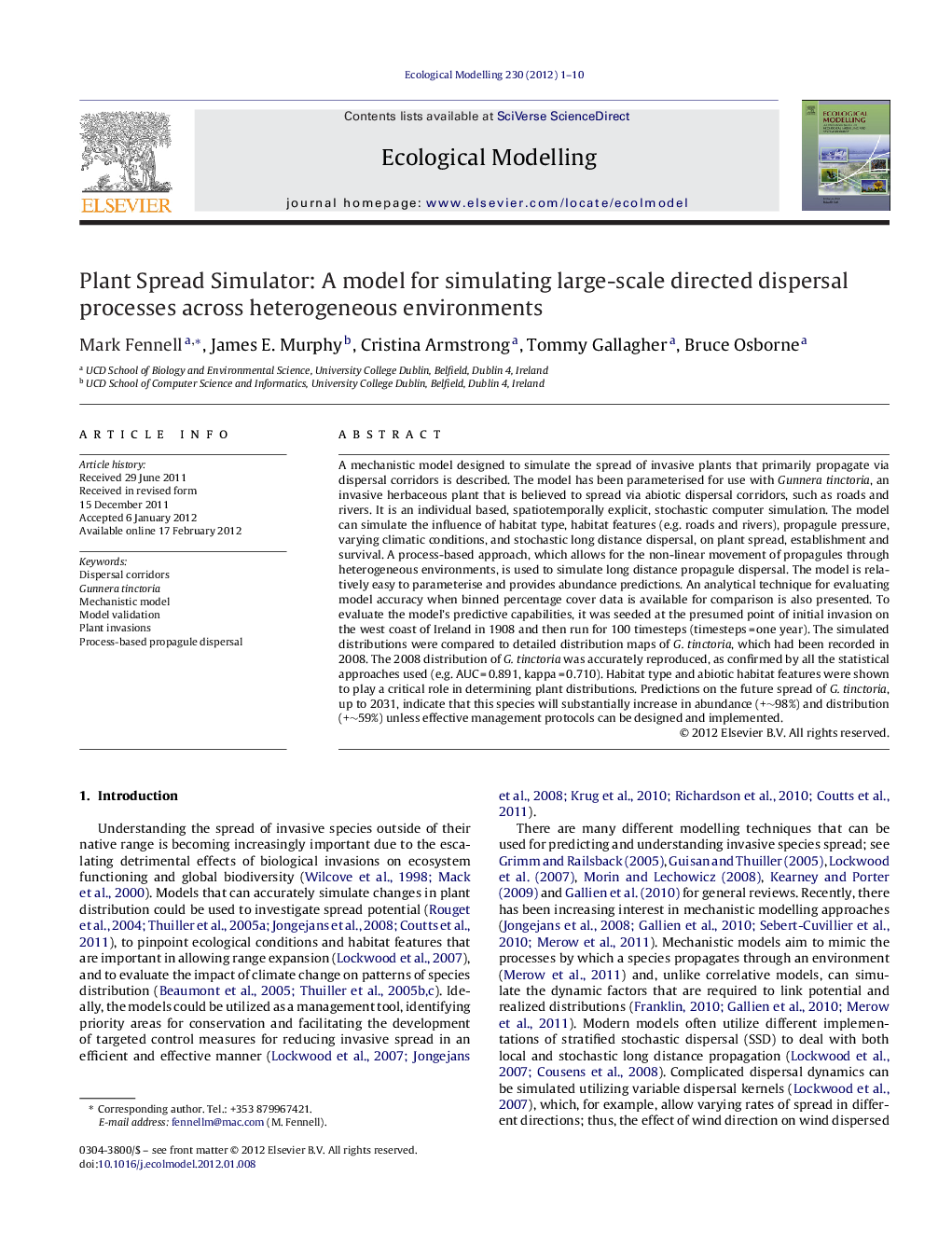| Article ID | Journal | Published Year | Pages | File Type |
|---|---|---|---|---|
| 4376506 | Ecological Modelling | 2012 | 10 Pages |
A mechanistic model designed to simulate the spread of invasive plants that primarily propagate via dispersal corridors is described. The model has been parameterised for use with Gunnera tinctoria, an invasive herbaceous plant that is believed to spread via abiotic dispersal corridors, such as roads and rivers. It is an individual based, spatiotemporally explicit, stochastic computer simulation. The model can simulate the influence of habitat type, habitat features (e.g. roads and rivers), propagule pressure, varying climatic conditions, and stochastic long distance dispersal, on plant spread, establishment and survival. A process-based approach, which allows for the non-linear movement of propagules through heterogeneous environments, is used to simulate long distance propagule dispersal. The model is relatively easy to parameterise and provides abundance predictions. An analytical technique for evaluating model accuracy when binned percentage cover data is available for comparison is also presented. To evaluate the model's predictive capabilities, it was seeded at the presumed point of initial invasion on the west coast of Ireland in 1908 and then run for 100 timesteps (timesteps = one year). The simulated distributions were compared to detailed distribution maps of G. tinctoria, which had been recorded in 2008. The 2008 distribution of G. tinctoria was accurately reproduced, as confirmed by all the statistical approaches used (e.g. AUC = 0.891, kappa = 0.710). Habitat type and abiotic habitat features were shown to play a critical role in determining plant distributions. Predictions on the future spread of G. tinctoria, up to 2031, indicate that this species will substantially increase in abundance (+∼98%) and distribution (+∼59%) unless effective management protocols can be designed and implemented.
► A mechanistic model for simulating plant spread by dispersal corridors is described. ► The model was shown to simulate Gunnera tinctoria spread accurately. ► Habitat type and abiotic habitat features influence the distribution of the species. ► The distribution of this species was predicted to increase substantially by 2031. ► A new analytical method for comparing binned percentage cover is presented.
